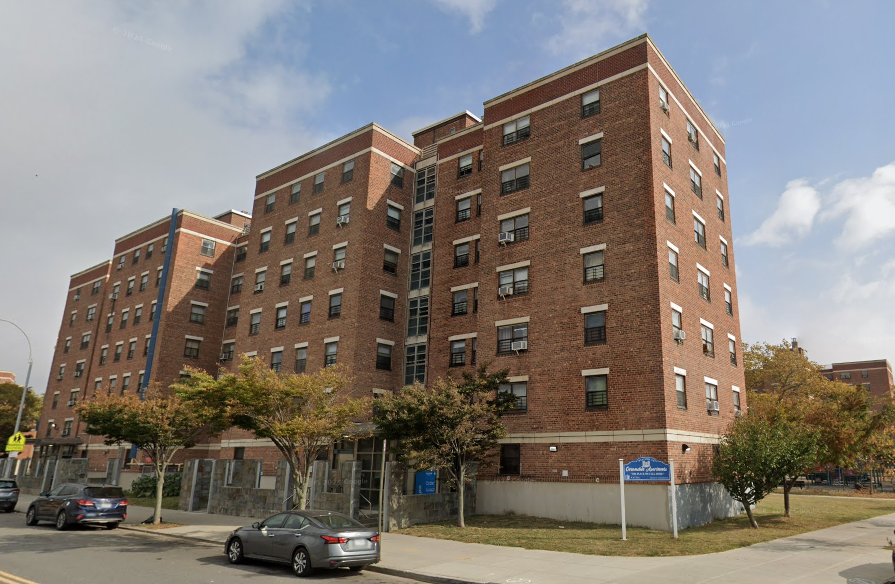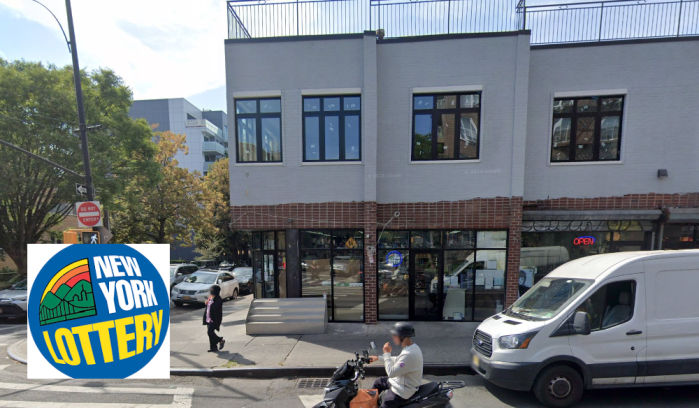BY LIZ SADLER CRYAN | With their intricate woodwork or simple curved moldings, brownstone front doors have graced many an Instagram post, magazine ad and movie set. They are the focal point of a brownstone or row house facade. But many have been damaged by years of sun exposure or neglect, or replaced altogether with a cheaper alternative.
Consider these expert tips on how give your brownstone front doors a facelift:
“If it’s something minor, I tell people it’s gonna be a repair,” said Vaughan Scully, of Heights Woodworking. “If it’s warped, then you have a problem. We go over there and take a look at what we have. When it comes to doors, if you have a very unique or high-quality door, or a door with some unusual features or a lot of decorative elements, or maybe very large, or in an unusual size, or something that’s historic, that’s the kind of place where it makes sense to restore it. You’re never gonna make it exactly the same way.”
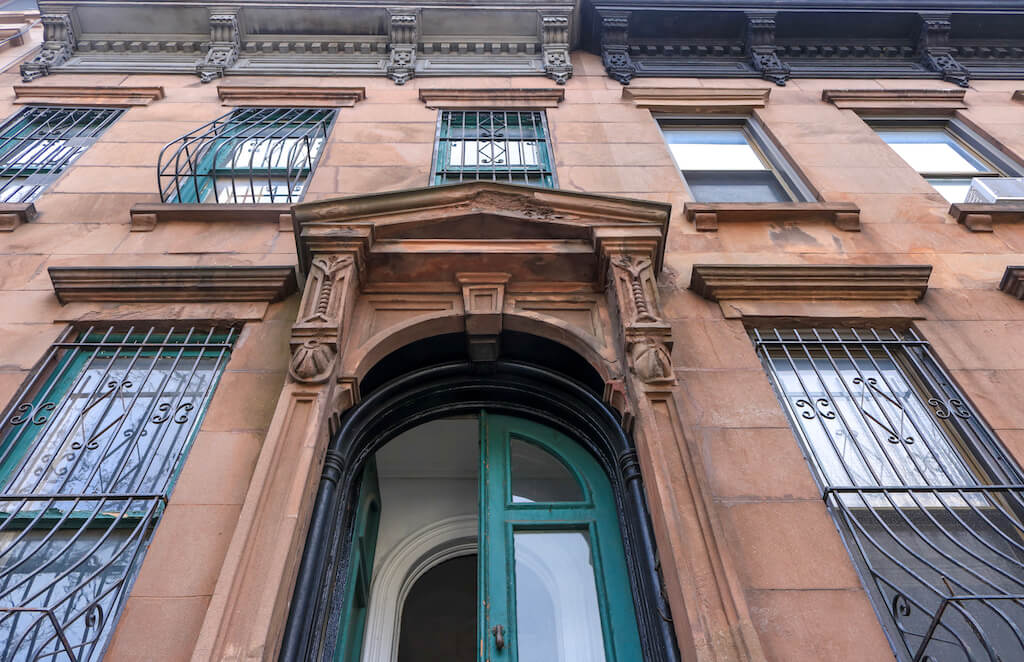
For a door with 12 square pieces of beveled glass and a curve at the top, Scully applied a new veneer, panels and moldings around the glass. He added wood to the bottom so it would reach the saddle.
“That customer saved probably $7,000 by fixing his old door up compared to getting a new one,” Scully said. “A new door would have been $16,000 to $17,000.”
But sometimes a new door makes sense.
“There’s other cases where it’s not really worth it if you have a door that’s lesser quality –- maybe it’s pine, maybe it’s painted,” Scully noted. “Restoring it is gonna cost about $5,000 and new it’s gonna cost $7,000. You’re putting quite a bit of money in something that’s not gonna be new when you get it back.”
Building a brownstone door from scratch costs about $10,000 and takes four to six weeks, as long as it can it be hung on the existing doorjamb, said Nate Shellkopf, of southside.workshop.
“Once you take the jamb out, it’s a can of worms opened up all over the floor,” he said. “I try and save it any time I can. For a door, jamb installation and casings, a reproduction can cost $15,000 to $20,000.”
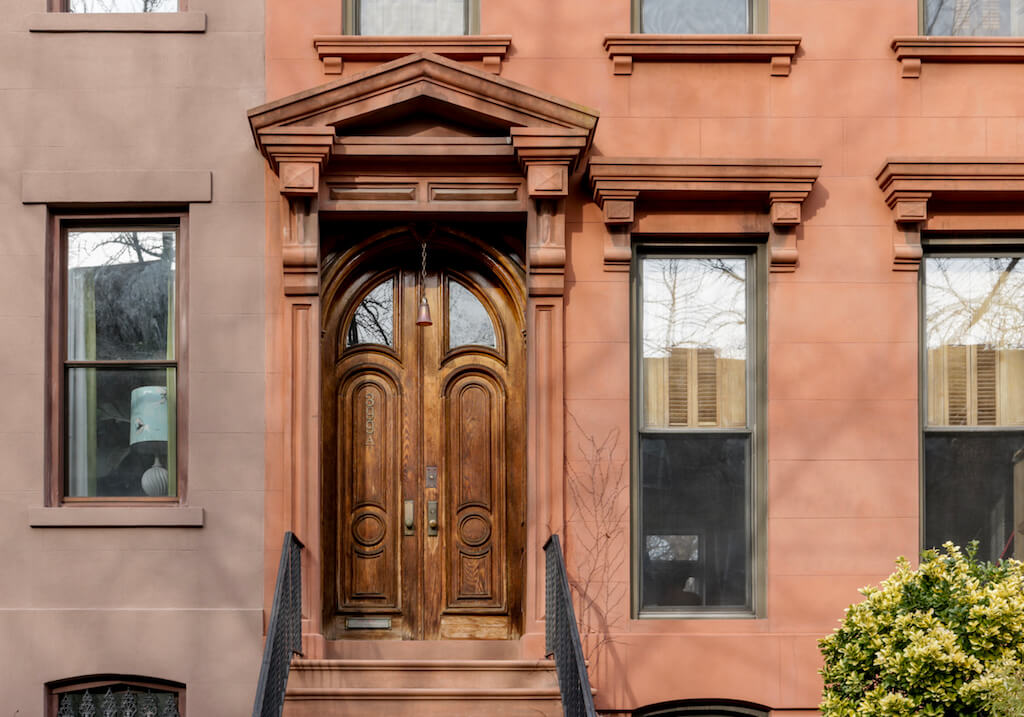
Shellkopf refers to tax photos and neighboring brownstones when the original door is missing. Working in his Sunset Park, Brooklyn, studio, he uses stave core construction to build his doors from scratch, using pieces of eastern pine glued together to create the core, and mahogany or other high-quality wood veneers on the outside. Steel knives can cut intricate trim work.
“When the top of the door is round, it requires radius work — that ups it a notch,” he said. “To run a molding at a radius takes some skill to do. When you’re doing a brownstone door with radius work, there’s only a few of us who do it.”
Vincent Battiloro, of The Finest Brownstone Wood Restoration, started making doors at age 14 in Naples, Italy. He’s now 77.
“A lot of times, over the years, the doors have been painted over or varnished over. So a lot of people call me to bring back the original color of the wood, [and I] sand, repair or replicate missing parts,” Battiloro said. “In the event that the front doors are not repairable, we will duplicate the original design. Sometimes, they just have a door from Home Depot, so what we ask the customer to do is look on their block for original doors. Nine times out of 10 we just look at the door next door and we just replicate it.”
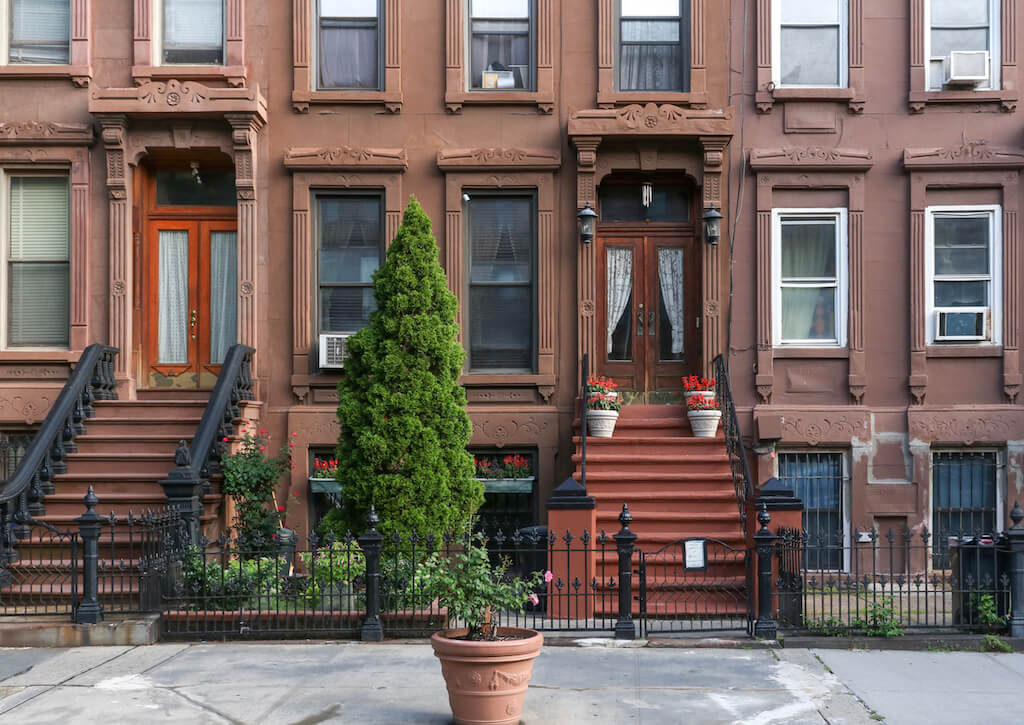
Salvaged doors are another option when the original door is missing -– but they can turn out to be more work and money than homeowners anticipate.
“If you don’t get something that’s very close to the opening that you have, you’re in for a lot of work,” Scully said. “If you buy a door that doesn’t fit the opening that you have and you’re not gonna change the opening — which means taking out the frame, cutting into the wall and building a new frame — you will probably have to cut or modify the door by adding or removing from the side, top or bottom.
“You should line up a person to install first and go with them to pick it out,” he said. “They’ll know if it’s gonna work or not.”
This article was first published in Brownstoner, a sister publication of The Villager.





